[Here’s a link to other forays around my map.]
I had a new toy to play with this week as I made a beeline towards my grid square. I pretty much know my way around my map and can follow my nose to here or there. Inevitably, however I usually end up following familiar routes rather than exploring alternative turnings. And to make things simpler, I often use Google Maps as I ride. But today I tried out a funky new bike computer called Beeline. It can either guide you on quiet routes, or simply point in the direction of your final destination and allow you to make all the decisions along the way. It felt pleasantly distraction-free to be following my nose (but reassured that I was still heading in the right direction) and was simpler even than using Google Maps on a handlebar-mounted phone. I found myself paying more attention to how the lay of the land all fitted together and discovered lanes I had never ridden before. I’m really starting to figure out the jigsaw of the map I’m exploring. You can buy the bike computer [Beeline kindly sent me a freebie, on the understanding that I would only endorse it if I genuinely liked it] and it is a really nice, minimalist device. But if you already cycle with a handlebar-mounted phone you can easily use their app instead.


Of course, the masters of beeline navigation are bees! They can fly directly to food sources thanks to the information gleaned from their buddy’s waggle dance which demonstrates to the other bees where it found food. The waggle dance consists of flying in a straight line followed by returning loops. The direction of the straight line indicates the direction of the food in relation to the sun.
For example, if the bee runs straight up the hive walls, this means that the food can be found by flying toward the sun. Conversely, if the bee runs straight down the hive wall, the food can be found by flying away from the sun. The quality of the flowers are indicated by the speed of the returning loops.
The most important part of the waggle dance is the waggle run. As the bee flies its straight line and returning loops, it vibrates its wings and waggles its abdomen. By doing so, the bee moves the air around it, allowing other bees near it to learn the location of the food by the change in air movement.
Bees are not to be taken as mere insects — with solar compasses, internal clocks, electrical attraction to plants, and intricate dances, they are a highly efficient and cooperative species that find food and communicate in astonishing ways.
Another nice use of the ‘beeline’ phrase highlights the shocking state of the natural world in Britain. Imagine trying to travel around Britain without our road and rail network. Or imagine if nine out of every ten miles of road just didn’t exist – life would be impossible! Well for much of our wildlife this is the reality – it is confined to tiny fragments of habitat and unable to move across the countryside as our climate and landscape rapidly changes. It has been predicted that 40-70% of species could go extinct if action is not taken to enable species to move through the landscape.
Our bees, butterflies and hoverflies have suffered badly over the last fifty or so years, due to changes in land use as a result of modern farming methods, urban spread and new transport links. Over 97% (an area the size of Wales) of all flower-rich grasslands have been lost in England since the 1930s, (and this is mirrored in other parts of Britain) reducing pollen and nectar sources and leading to a serious decline in the wildlife depending on wildflower-rich habitat.
B-Lines are an imaginative and beautiful solution to the problem of the loss of flowers and pollinators. The B-Lines are a series of ‘insect pathways’ running through our countryside and towns, along which we are restoring and creating a series of wildflower-rich habitat stepping stones. They link existing wildlife areas together, creating a network, like a railway, that will weave across the British landscape. This will provide large areas of brand new habitat benefiting bees and butterflies– but also a host of other wildlife. Making this happen will take time and will need farmers, land owners, wildlife organisations, businesses, local authorities and the general public to work together to create flower-rich grassland in the best locations.
I started travelling around today’s grid square at the pond by the village green. In the opening decades of the twenty-first century, the village duck pond might seem like a quaint anachronism, a little out of step with modern life, perhaps, despite its obvious charms as a wildlife haven and somewhere to relax awhile. For all its modern serenity, however, the village pond was once a place where the scene would be far from quiet and the pond and its green would be at the very centre of village life. Perhaps hard to believe at this time of year, when the tadpoles begin to climb the slippery pole of survival and natural life flourishes all around them, but for their medieval builders, ponds were huge undertakings and aesthetics were probably the last things on their minds.
Like the village green it is part of, the pond is often common land, a communal facility for the use of the whole village. Historically the village pond is likely to have provided fish – pisciculture was conducted with great enthusiasm in the Middle Ages – and would have been also used for soaking cartwheels (to prevent them from shrinking), washing clothes and as a watering hole for cattle, either grazing on the green itself or providing water for itinerant droves on the move to market or up the valley for summer pasture.
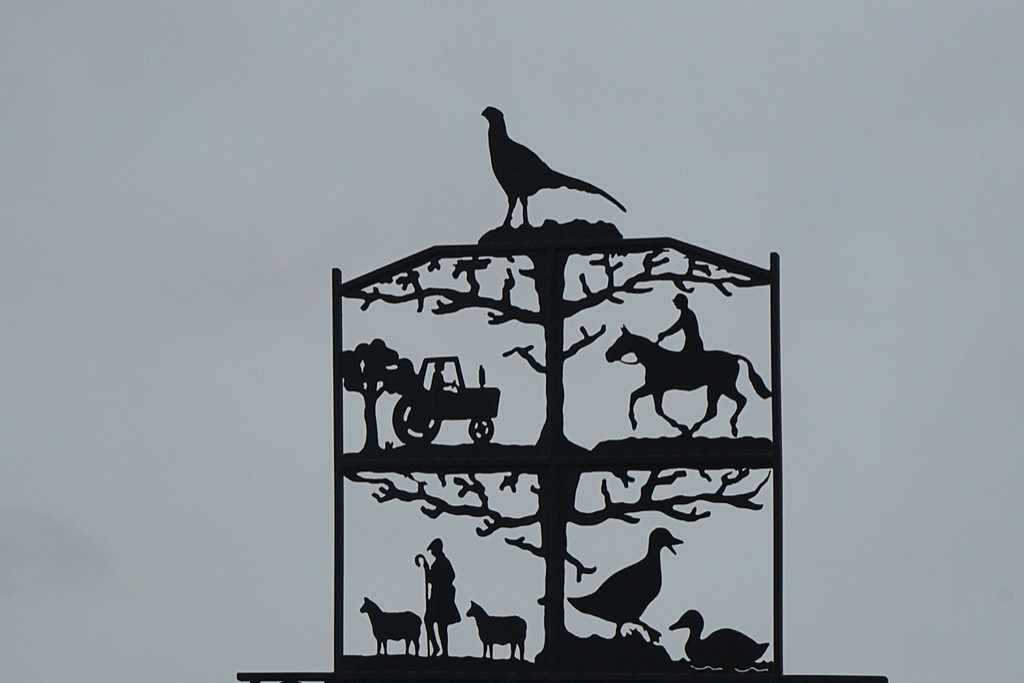

Completing the idyllic picture was a beautiful old flint and brick oast house, although the cowls have been replaced with pointed roofs. An oast house is a building designed for drying hops as part of the brewing process. They can be found in most hop-growing areas. They consist of a rectangular one or two-storey building and one or more kilns in which the hops were spread out to be dried by hot air rising from a wood or charcoal fire below. The drying floors were thin and perforated to permit the heat to pass through and escape through a cowl in the roof which turned with the wind. (A cowl is a device used on a kiln to keep the weather out of and to induce a flow of air through the kiln.) The freshly picked hops from the fields were raked in to dry and then raked out to cool before being bagged up and sent to the brewery. Early oast houses were simply adapted barns but, by the 18th century, the distinctive tall buildings with conical roofs had been developed to increase the draught. At first these were square but around 1800 roundel kilns were developed in the belief that they were more efficient.
I set off down a narrow lane that ran beneath an archway of hedges and trees. It had been chewed to a muddy swamp by horses hooves so I picked my way carefully. I know that horse lovers will disagree, but wandering around my map has got me thinking that far too much of it is given over to horses. I’m pretty certain that horses are allowed access to more of this map than I am! Access issues, in general, continually hamper my efforts to get acquainted with this landscape. Even where there are footpaths they often feel as though they have been allowed only grudgingly, with fences and cautionary signs keeping me strictly on the narrow strip of land that someone has deemed I am allowed to walk on. A ridiculous amount of my map is off-limits to me.
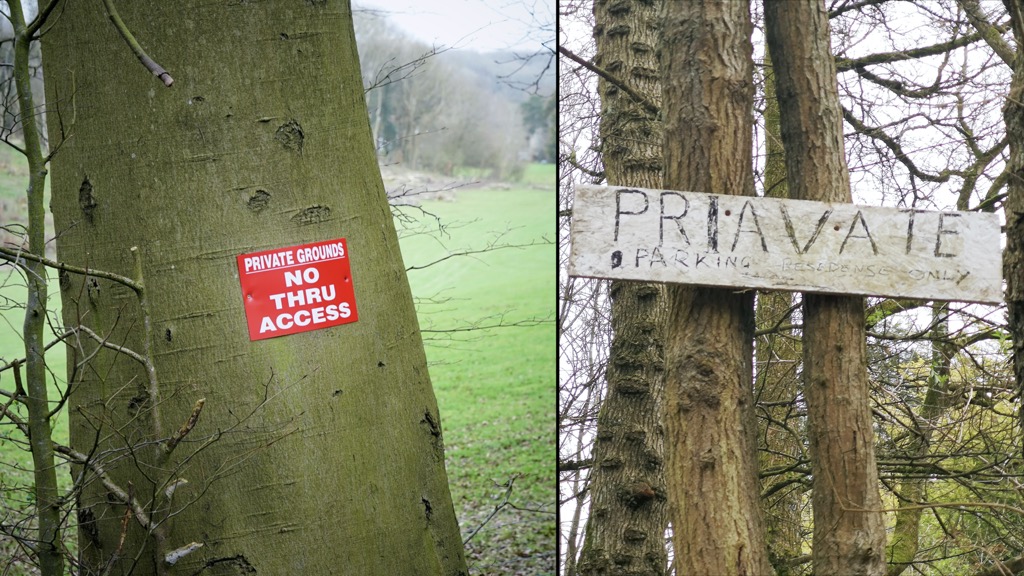
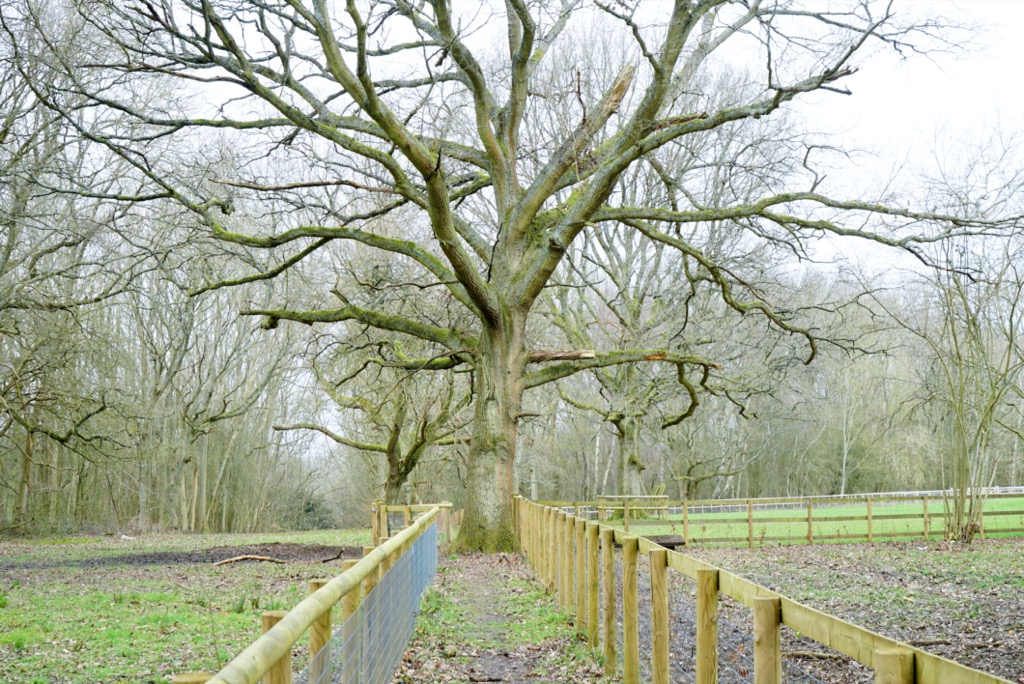
I was walking down one of these narrow, fenced-in corridors a squirrel sitting on the fence suddenly noticed me. The nearest safe tree for the squirrel was about 20 metres away. Unfortunately for the furry fellow, I was standing between the tree and he. Nonetheless, the squirrel decided that the lure of the tree was greater than the terror of the human. So it sprinted along the top of the fence, a clitter clatter of tiny claws, zooming straight past me within easy arm’s reach, and leapt for the safety of the high branches. I was not sure whether to admire its agility or wonder at its stupidity for running straight by me.
As a fond feeder of birds at home, I am in constant conflict with the squirrels. Outside my shed I have a squirrel-proof bird feeder, complete with a squirrel-proof concave baffle to stop them climbing the pole. But still they leap from trees, leap from my shed roof to try to get at the bird food. I have to admire their agility. Squirrels have evolved with several anatomical adaptations that help them with their acrobatics. They are obviously equipped to make vertical and horizontal leaps that would be superhuman.
First, they have very powerful hind legs, much larger than their front limbs, giving them strong propulsion, especially in proportion to their relatively small and light bodies. Second, the “wrists” of their hind legs are double-jointed and hyper-extendable, so that they can reverse paw directions and run down a tree as easily as they run up. Cats, for one example, lack this kind of hypermobility and tend to get at least temporarily stuck after climbing a tree.
Squirrels also have small and very sharp claws, and combined with their reversible hind legs, this means they can hang upside down when they want. The sharp claws also let them find a secure mooring on small irregularities on a tree trunk’s bark or even on a seemingly smooth telephone pole. This gives squirrels a firm jumping-off place from which to start a vertical leap.
This grid square felt like a typical English rural landscape. Farms with cows, sheep, pigs, horses, goats, and chickens. And no old McDonald’s litter. The land was higgledy piggledy with hills, paths, and woodland. Indeed it felt as though there was an abundance of woodland here, and that made me very happy. Annie Dillard, my patron saint of paying close attention and celebrating the abundance writes, “The more I work, the more I see things differently; that is, everything gains in grandeur every day, becomes more and more unknown, more and more beautiful. The closer I come, the grander it is, the more remote it is.” Offering guidance for those who might wish to follow her manner of paying attention to the world, she recounts with approval some monastic techniques for avoiding distraction, as well as Michelangelo’s famous last instruction to his apprentice: “Draw, Antonio, draw, Antonio, draw and do not waste time.” She asks a lot of her readers, but offers a commensurate measure of herself.
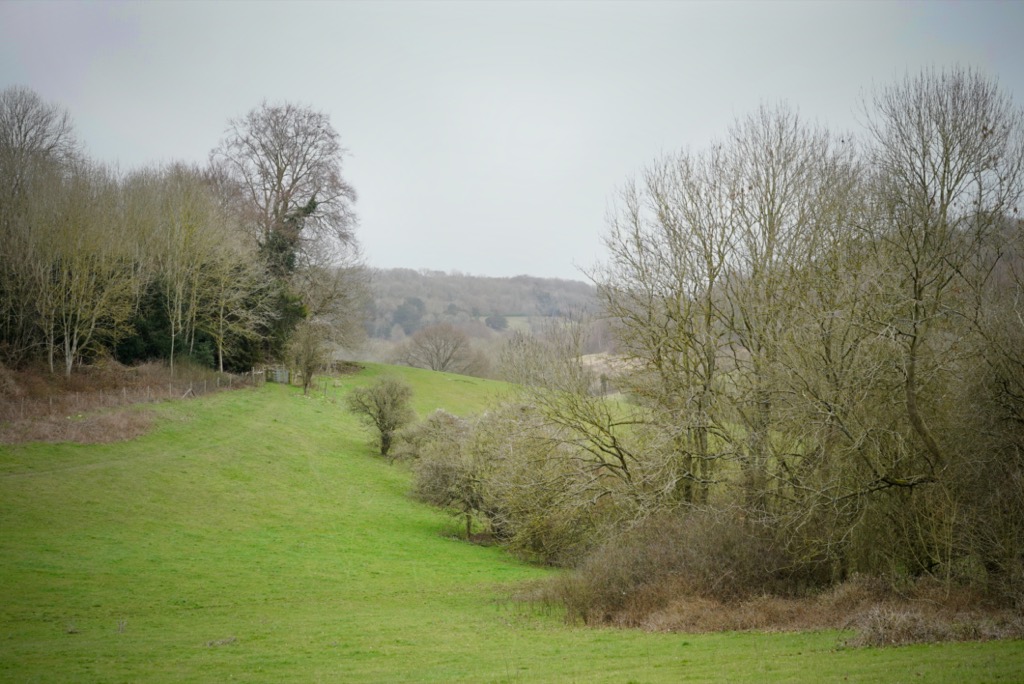

There was, on this damp and dreary March morning, an abundance of birdsong, noticeably more even than a week ago. An abundance of green shoots and buds spraying the woods in a hopeful green mist, three buzzards circling high overhead, and a mischief of chattering magpies who sounded concerned by the buzzards. I nibbled a few fresh hawthorn leaves and watched the magpies.
‘One for sorrow,’ I began counting.
The rhyme has its origins in superstitions connected with magpies, considered a bird of ill omen in some cultures, and in Britain, at least as far back as the early sixteenth century. The rhyme was first recorded around 1780 in a note with the lyric:
One for sorrow,
Two for mirth,
Three for a funeral
And four for birth
In 1815, two French playwrights penned a “historical melodrama” called La Pie Voleuse, in which a servant is sentenced to death for stealing silverware from her master, when the real thief is his pet magpie. Moved by the Parisian urban myth, Gioachino Rossini set his opera La gazza ladra to the same story. This effectively nailed the magpie’s character to the gibbet of popular opinion.
Fast-forward 200 years and researchers subjected magpies to experiments that finally put the thieving stereotype to the test. They gave wild Eurasian magpies two piles of nuts. One was near shiny objects like screws, rings and rectangles of aluminium foil; the other was near the same objects sprayed matte blue.
The birds were distracted from feeding by the presence of objects, but were not obviously drawn to shiny over blue. In two out of 64 tests, a bird did pick up a shiny ring, but quickly discarded it.
“We can’t say that magpies never steal shiny objects,” says study author Stephen Lea of the University of Exeter in the UK. But “we currently have no reliable evidence that magpies, more than any other bird, are attracted to shiny objects more than any other object.”
The magpie is a persistent, noisy and conspicuous predator, but there is little evidence that the magpies’ predations have resulted in a decline in songbirds.
Pet cats are a far bigger problem. “Cats are undoubtedly a monumental threat to songbirds, but it’s magpies that incur the wrath of the average bird lover,” says ecologist Tim Birkhead. (Domestic cats are killing an estimated 230m native Australian birds, reptiles and mammals every year, according to new research that quantifies the pet’s national toll on native animals for the first time.) So magpies are misunderstood. “If magpies were rare, people would travel a long way to see them,” says Birkhead. “In bright sunlight they are the most exquisitely beautiful birds, with that lovely long tail and iridescence.”
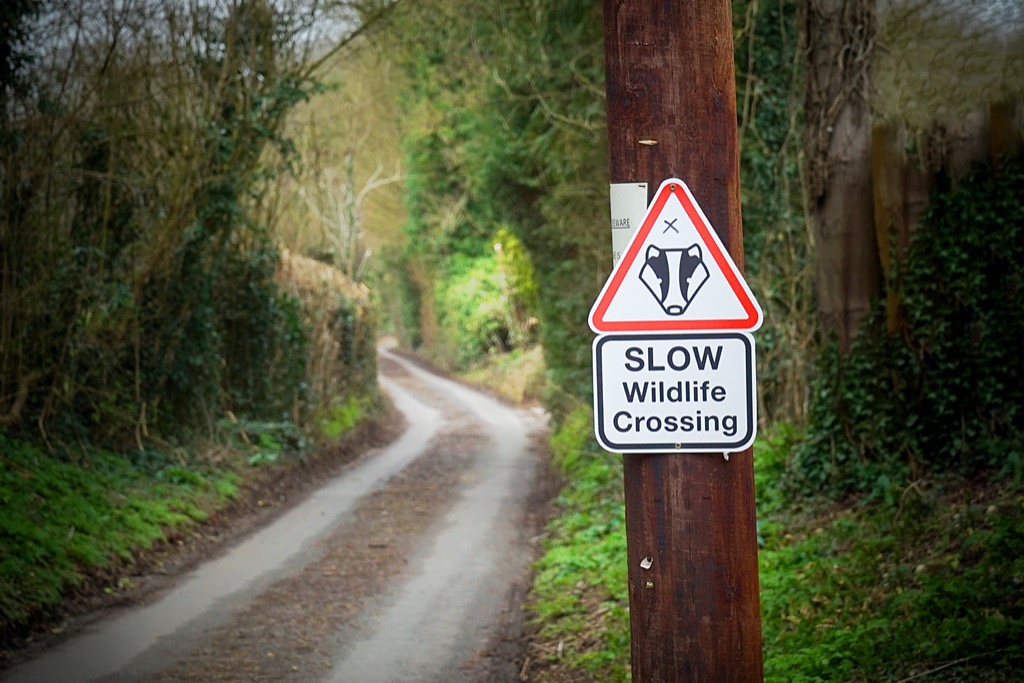

I saw the first pigs I’ve encountered on my map so far. They were housed in a patch of woodland and had turned every inch of the ground to thick mud. The pigs looked as happy as, well, pigs in muck. Pigs have been put out to pasture in woodland for centuries. Pannage is the practice of releasing livestock-pigs in a forest, so that they can feed on fallen acorns, beechmast, chestnuts or other nuts. Historically, it was a right or privilege granted to local people on common land or in royal forests. Pannage had two very useful purposes in Medieval times: in rooting around looking for nuts, they also turned the soil and broke it. The advantage of pigs rooting into it was that the soil was kept from packing down and would release nutrients for plant growth. It was also a method of fattening the pigs quickly for slaughter.


So long as they are rotated regularly into different areas, this silvopasture system can work well. Silvopasture is an ancient practice that integrates trees and pasture into a single system for raising livestock. Research suggests silvopasture far outpaces any grassland technique for counteracting the methane emissions of livestock and sequestering carbon under-hoof. Pastures strewn or crisscrossed with trees sequester five to ten times as much carbon as those of the same size that are treeless, storing it in both biomass and soil.
Carbon aside, the advantages of silvopasture are considerable, with financial benefits for farmers and ranchers. Livestock, trees, and any additional forestry products, such as nuts, fruit, and mushrooms, generate income on different time horizons. The health and productivity of both animals and the land improve. Because silvopasture systems are diversely productive and more resilient, farmers are better insulated from risk.
Past the pigs and into a peaceful patch of coppiced wood, I passed patches of primroses, a plump stuffed panda perched up in the fork of a pollarded tree, and a ramshackle hut. I paused to pee. If the cabin was a kids’ playground, the construction was impressive. If it was built by adults for some other reason then it was very much past its prime.

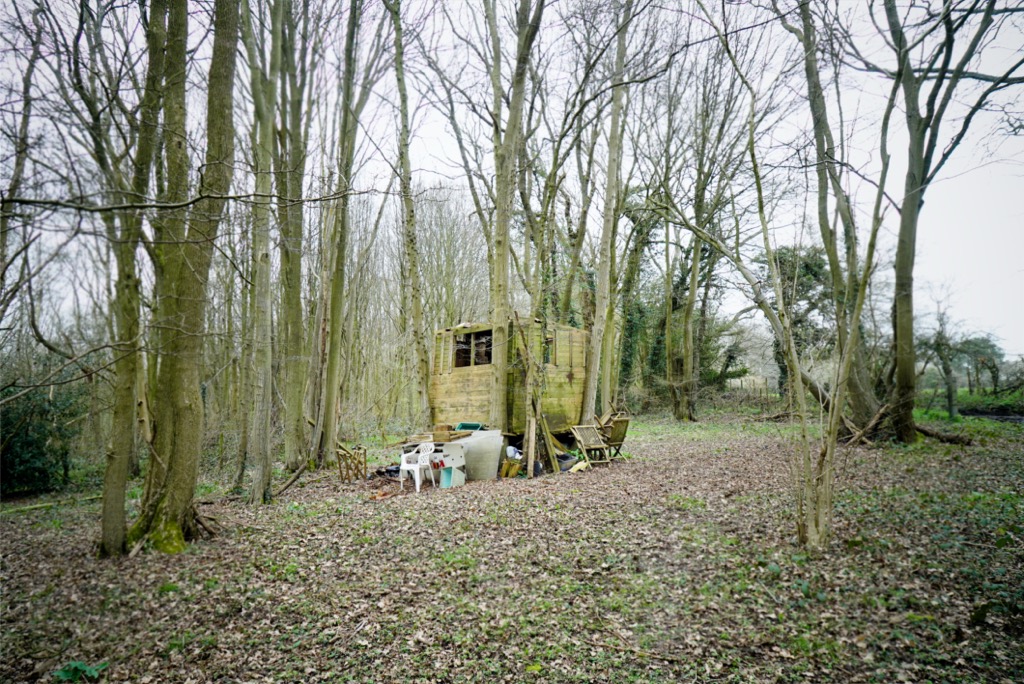

Across the valley, an old timber house was tucked onto a hillside in a fold of woodland, like a scene from Cider with Rosie. Alongside the footpath were about eight small, homemade wooden crosses tucked up against the hedgerow, each bearing the dates of a beloved pet dog. I stopped to chat over the low garden fence with the house owner, an elderly lady who was pottering around her garden. I said how peaceful and bucolic it was around here. I liked that you could never see more than a few hundred metres amongst the hills and trees. She told me that her home was built around 1900 ‘and I’ve been here nearly as long!’
I asked her about the pond in her garden, for I’ve been on a decade-long mission to find frogspawn in this area. ‘Oh yes,’ she told me. ‘We get loads of frogs. Newts too. And dragonflies.’
As a boy I used to love pushing through the beech hedge at the bottom of our garden, out into the fields, and collecting a gloopy ball of frogspawn from a nearby spring. I loved watching the tadpoles hatch then grow into froglets and I’d like to be able to do the same today in my shed. But because of lockdown and her being a frail old lady, I didn’t want to bother her by asking if I could collect some frogspawn. She would have thought me very weird as I happily filled my water bottle with frogspawn! I shall continue my search.
Shortly afterwards a heavy, cold rain began to fall, sucking the joy and the warmth from me. So I put my head down, hammered at the pedals, and made a speedy beeline for home. One brief, cheerful postscript to today’s grid square was that I cycled homewards I saw my first ever bullfinch, a chunky beautiful red bird. But as it was not in today’s grid square I will spare you another dive down a deep Google rabbit hole! Until next time…

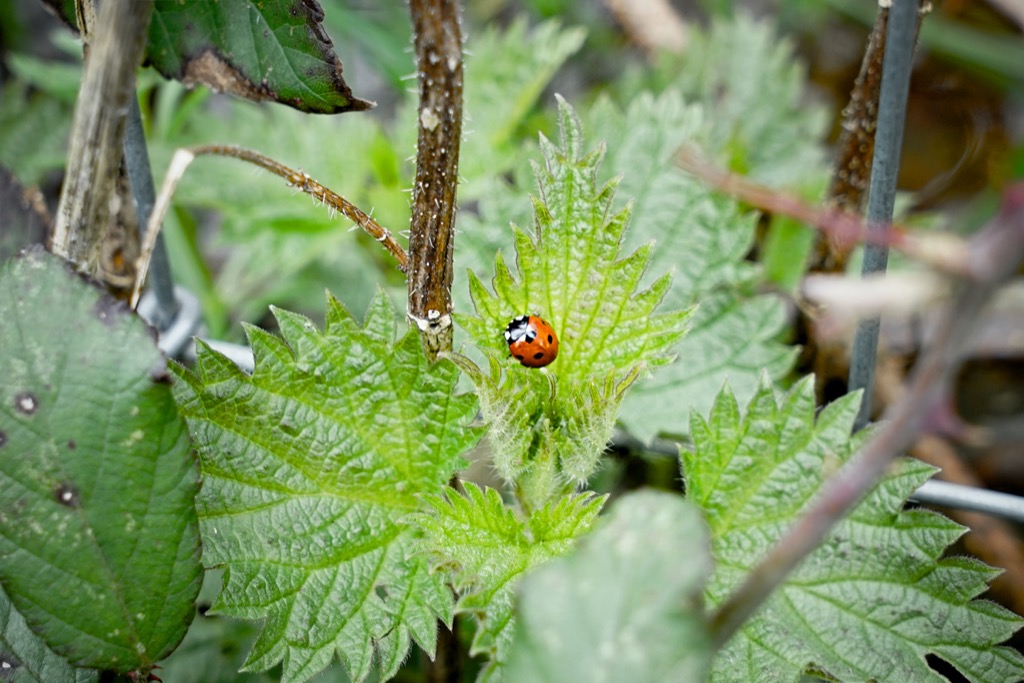
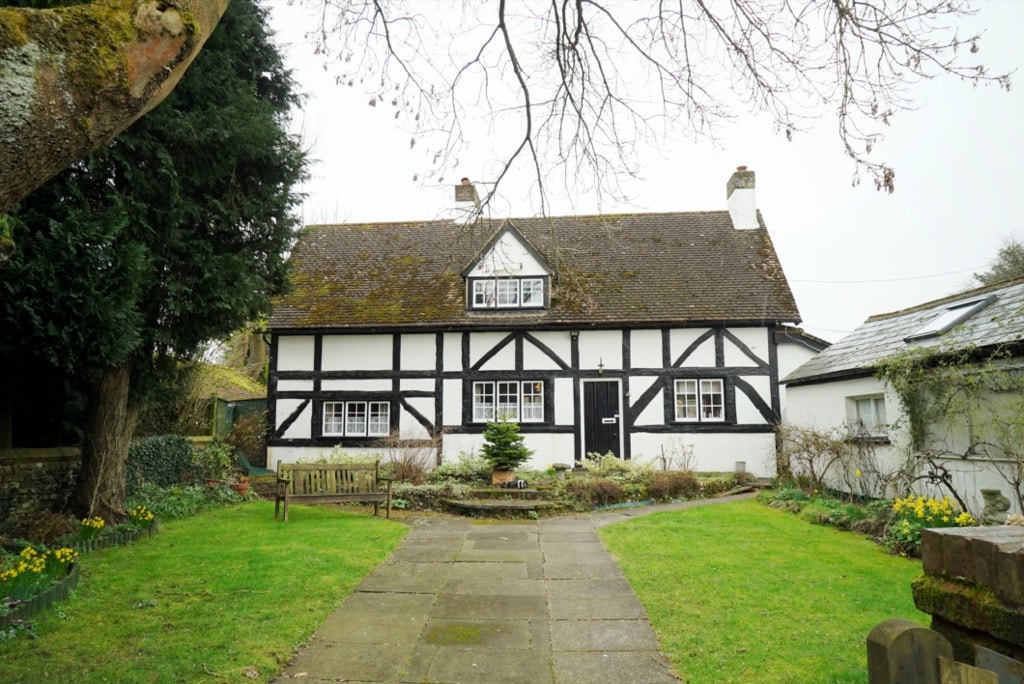




Comments